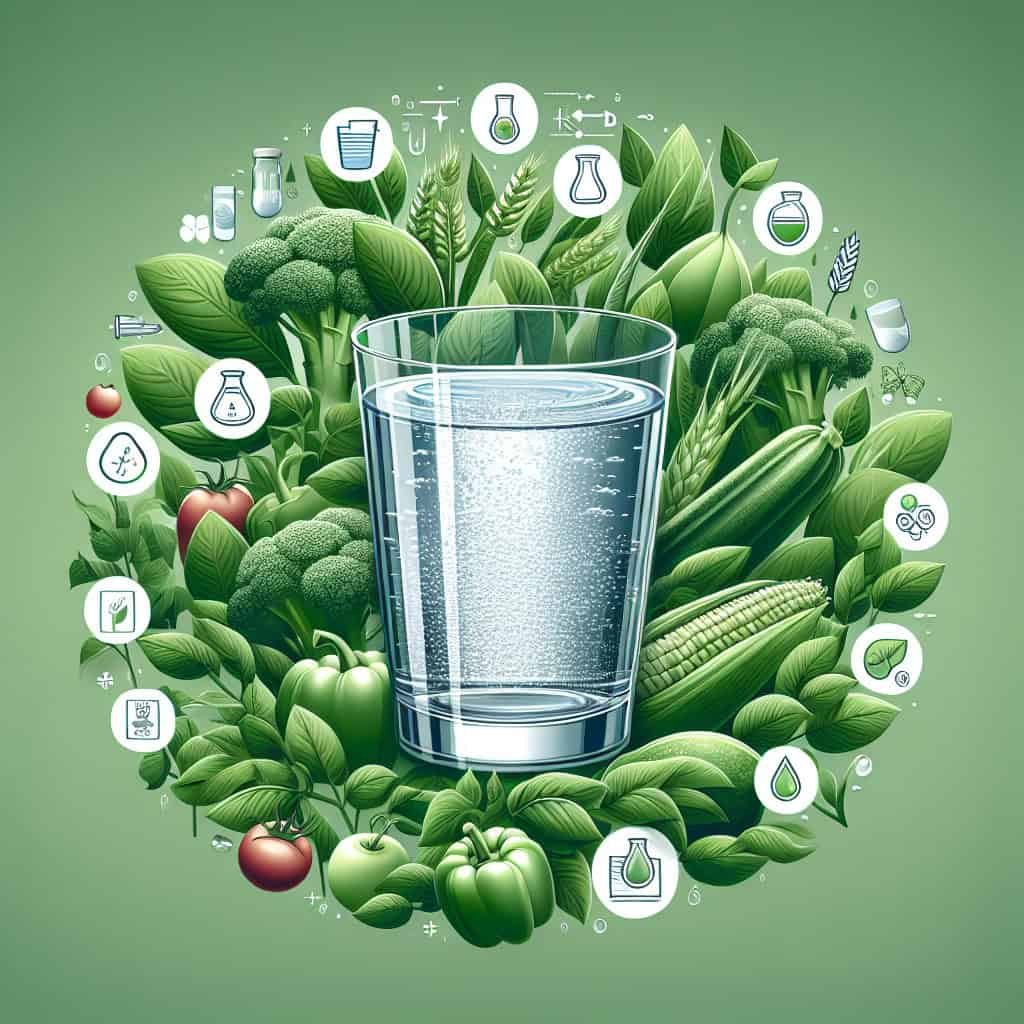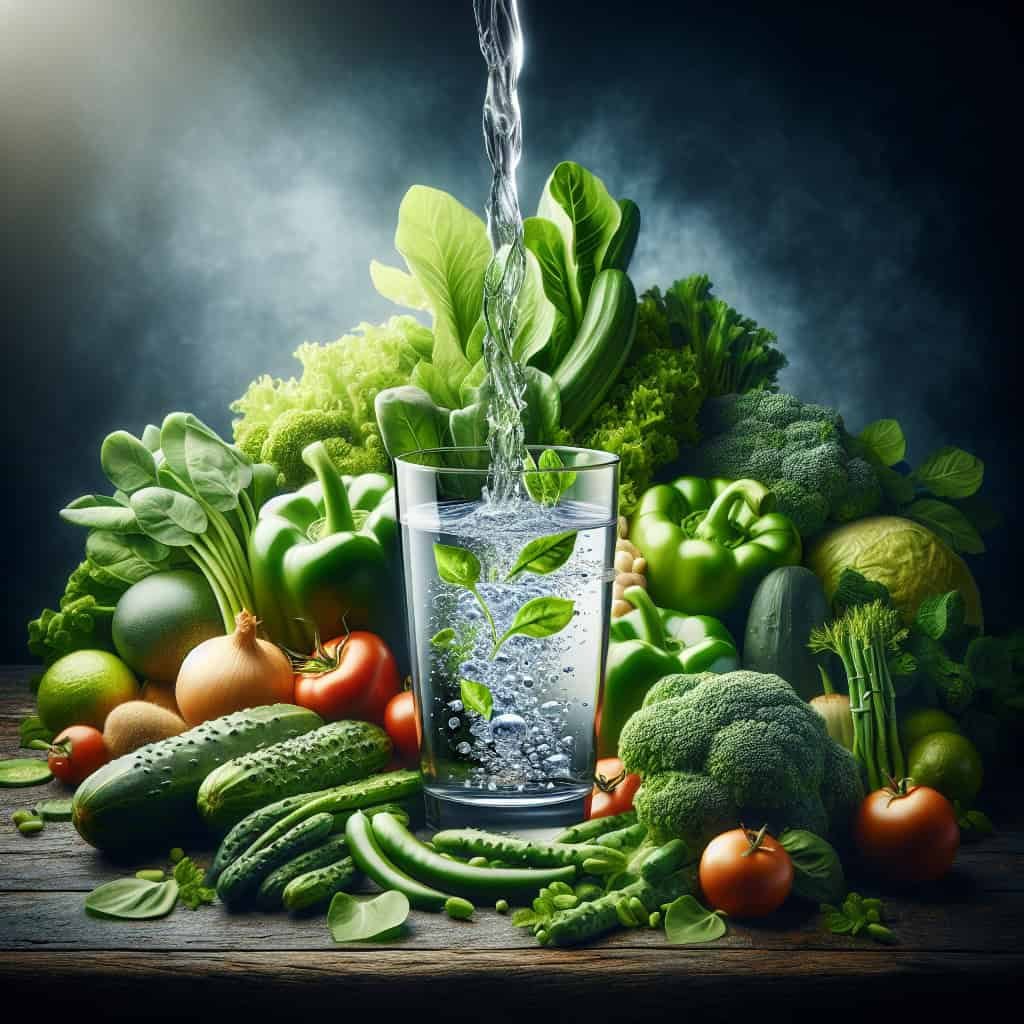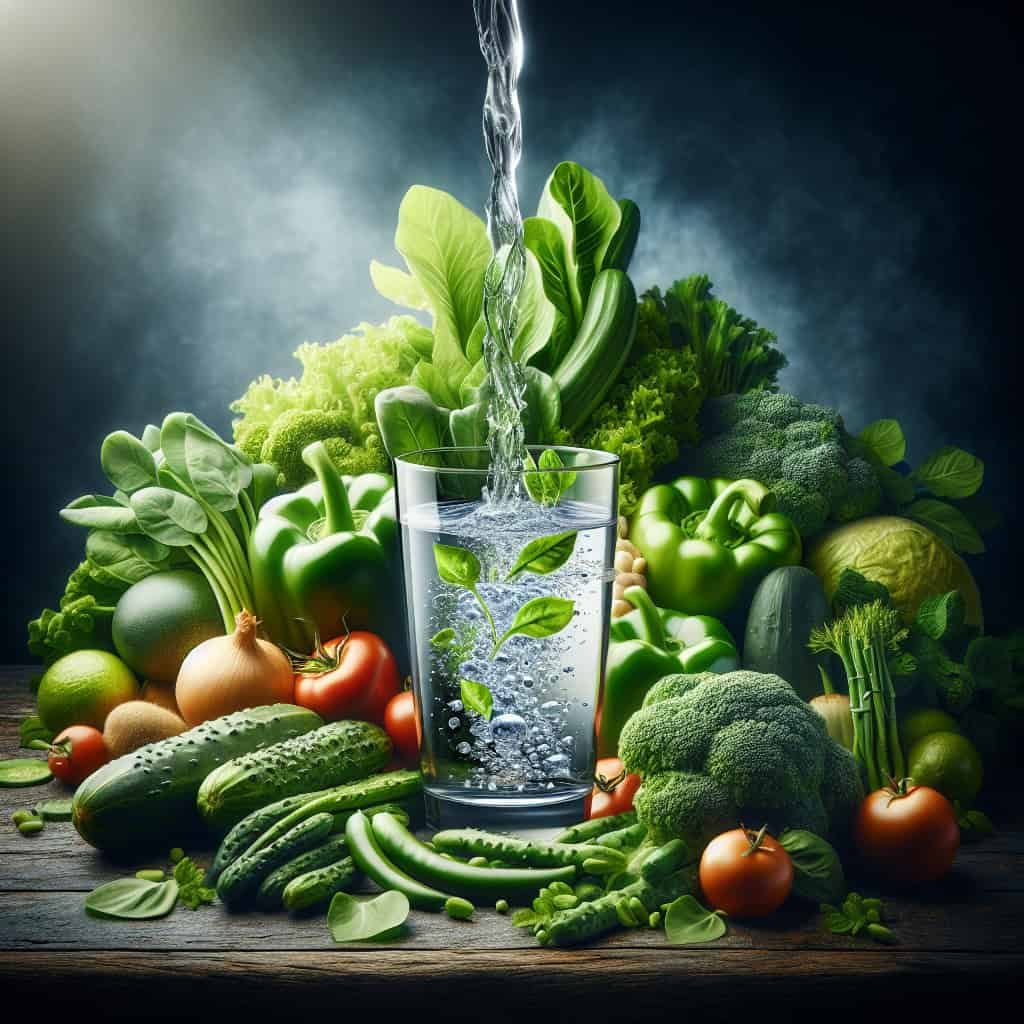If you’re concerned about the presence of pesticides in your well water and wondering how to eliminate them, you’ve come to the right place. Discovering the presence of pesticides in your water source can be alarming, but with the right knowledge and approach, you can effectively eliminate them. In this article, we will explore various methods and steps you can take to ensure clean and pesticide-free well water, providing you with peace of mind and a healthier environment. So let’s dive in and learn how you can make your well water pesticide-free.
Testing for Pesticides
Ensuring the safety and purity of your well water is of utmost importance, especially when it comes to eliminating pesticides. Before embarking on any treatment method, it is crucial to first identify the common pesticides present in your water. This can be done through comprehensive testing conducted by professional testing services or using home test kits.
Identifying Common Pesticides
To effectively eliminate pesticides from your well water, it is essential to know which specific pesticides are present. Different pesticides require different treatment methods, so identifying them accurately will help you choose the most appropriate approach. Common pesticides found in well water include herbicides, insecticides, and fungicides. By conducting proper testing, you can gain valuable information about the types and concentrations of pesticides present in your water.
Hiring a Professional Testing Service
If you prefer a more in-depth analysis of your well water, hiring a professional testing service is highly recommended. These professionals have the expertise and specialized equipment to accurately detect and quantify the different pesticides in your water sample. They can provide a detailed report, which will be instrumental in determining the most suitable treatment method for your specific situation.
Using Home Test Kits
For those who prefer a more convenient and cost-effective option, home test kits are readily available. These test kits typically contain strips or vials that allow you to collect a water sample and perform simple chemical tests to detect the presence of pesticides. While home test kits may not provide as comprehensive results as professional testing services, they can still offer valuable insights into the pesticide levels in your well water.
Treatment Methods
Once you have identified the pesticides in your well water, it’s time to explore the various treatment methods available. There are several effective approaches to eliminating pesticides, including activated carbon filtration, distillation, reverse osmosis, ozonation, and UV disinfection. Each method has its own advantages and considerations, so it’s important to evaluate them carefully before making a decision.
Activated Carbon Filtration
Activated carbon filtration is a widely used method for removing pesticides from well water. It works by attracting and adsorbing organic compounds, including pesticides, onto the surface of the carbon. This filtration process effectively reduces the concentration of pesticides in the water. Activated carbon filters are relatively easy to install and maintain, making them a popular choice for homeowners.
Distillation
Distillation is another effective treatment method for removing pesticides from well water. The principle of distillation involves heating the water to its boiling point and collecting the vapor in a separate chamber. As the vapor condenses, it leaves behind impurities, including pesticides. Distillation systems come in different types, such as solar stills or electric distillers, and offer varying installation and operation requirements.
Reverse Osmosis
Reverse osmosis is a widely recognized method for pesticide removal. It utilizes a semipermeable membrane to separate impurities, including pesticides, from the water. This process effectively removes pesticides by forcing water through the membrane under high pressure. Reverse osmosis systems require proper installation and regular maintenance, including filter replacement, to ensure optimal performance.
Ozonation
Ozonation is a powerful treatment method that employs ozone, a highly reactive gas, to eliminate pesticides. Ozone works by breaking down organic compounds, including pesticides, through oxidation. There are different methods of ozonation, such as bubbling ozone gas through the water or using ozone generators. Implementing and maintaining an ozonation system requires careful consideration, as ozone can be hazardous if not handled properly.
UV Disinfection
UV disinfection is not only effective in neutralizing harmful bacteria and viruses in well water but can also play a role in removing pesticides. UV systems utilize ultraviolet light to inactivate and destroy microorganisms, including pesticide residues. Choosing the right UV system that provides sufficient UV dosage is crucial to ensure the complete elimination of pesticides. Installation and maintenance of UV systems are relatively straightforward but require periodic bulb replacement to maintain optimal performance.

Choosing the Right Treatment Method
When selecting the appropriate treatment method to eliminate pesticides from your well water, several factors should be taken into account. These considerations include pesticide types and concentrations, water quality parameters, cost and maintenance requirements, and seeking professional advice.
Considering Pesticide Types and Concentrations
Different pesticides have varying chemical properties and may require specific treatment methods for effective removal. By understanding the types and concentrations of pesticides present in your well water, you can narrow down the treatment options. Some treatment methods may be more effective against certain pesticides, making it vital to consider these factors before making a decision.
Assessing Water Quality Parameters
Apart from the pesticides themselves, it is crucial to evaluate other water quality parameters. Factors such as pH levels, hardness, and the presence of other contaminants can influence the effectiveness of treatment methods. Some treatment processes may work better under specific water conditions, so assessing these parameters will help you select the most suitable treatment method for your well water.
Evaluating Cost and Maintenance Requirements
Treatment methods vary in their initial costs and ongoing maintenance requirements. It’s important to consider your budget and evaluate the long-term costs associated with each treatment method. Additionally, some methods may require regular filter replacements or equipment servicing, while others may have lower maintenance demands. By understanding the cost and maintenance requirements, you can choose an option that aligns with your financial capabilities and preferences.
Seeking Professional Advice
If you find it challenging to navigate the complexities of pesticide elimination from well water, seeking professional advice is highly recommended. Water treatment specialists or environmental consultants can provide valuable insights and recommendations based on your specific situation. These professionals can assess your water quality, pesticide levels, and other relevant factors to guide you towards the most effective treatment method.
Activated Carbon Filtration
Activated carbon filtration is a widely utilized treatment method for removing pesticides from well water. It works based on the principle of adsorption, where the activated carbon attracts and retains organic compounds, including pesticides, on its surface.
Working Principle of Activated Carbon Filtration
Activated carbon is a highly porous substance with a large internal surface area. This porous structure allows it to effectively adsorb organic contaminants, including pesticides, by trapping them within its structure. As water passes through the activated carbon filter, pesticides bind to the carbon surface, resulting in their removal from the water.
Installation and Operation
Installing an activated carbon filtration system typically involves placing the filter in the main water line or near the point of entry into your home. This ensures that all water used throughout the house undergoes treatment. Activated carbon filters can vary in size and capacity, so it’s essential to select a system that can adequately handle the water flow rate.
Once installed, the activated carbon filtration system operates passively, requiring no additional energy or chemicals. Water flows through the carbon bed, and the pesticides are adsorbed, ensuring purified water for various household uses.
Maintenance Tips
To maintain the effectiveness of the activated carbon filtration system, regular maintenance is necessary. It’s recommended to replace the carbon filter periodically, as its adsorption capacity gradually decreases over time. Follow the manufacturer’s guidelines for filter replacement intervals, or if the flow rate starts to decline significantly. Additionally, flushing the system periodically can help remove accumulated sediments and extend the filter’s lifespan.
Effectiveness against Pesticides
Activated carbon filtration is generally effective in removing a wide range of pesticides from well water. However, its efficiency may depend on factors such as the pesticide’s chemical properties, concentration, and contact time with the carbon. For optimal results, it is crucial to choose an activated carbon filtration system that has been specifically designed and tested for pesticide removal.

Distillation
Distillation is a treatment method that effectively removes pesticides from well water by utilizing the principle of evaporation and condensation.
Principle of Distillation
In distillation, water is heated to its boiling point, causing it to vaporize and separate from impurities. As the steam rises, it leaves behind contaminants, including pesticides. The vapor is then cooled and condensed back into liquid form, resulting in purified water free from harmful substances.
Types of Distillation Systems
There are various types of distillation systems available, each with its own unique features. Solar stills are powered by solar energy and require sunlight to heat the water and initiate the distillation process. They can be relatively simple and easy to construct, making them suitable for remote locations.
Electric distillers, on the other hand, utilize electricity to heat the water and facilitate evaporation. These systems are typically more efficient than solar stills and provide a consistent supply of distilled water.
Installation and Operation
The installation process for distillation systems can vary depending on the type chosen. Solar stills require proper positioning to maximize sunlight exposure, while electric distillers need to be connected to a power source. Consulting the manufacturer’s instructions and guidelines is essential to ensure proper installation and operation.
Once installed, distillation systems operate by heating the water to produce steam, which is then condensed and collected as purified water. The process is continuous, allowing for a steady supply of pesticide-free water.
Limitations and Drawbacks
While distillation effectively removes pesticides from well water, there are limitations and drawbacks to consider. Distillation can be energy-intensive, especially when using electric distillers. Additionally, the process may remove essential minerals from the water, affecting its taste and nutritional value. To address this, some distillation systems include remineralization processes to restore the water’s mineral content.
Reverse Osmosis
Reverse osmosis is a widely recognized treatment method known for its effectiveness in purifying well water and removing pesticides.
Understanding Reverse Osmosis
Reverse osmosis works by forcing water through a semipermeable membrane under high pressure. The membrane allows water molecules to pass through while trapping larger contaminants, including pesticides. This process effectively removes a wide range of pollutants, resulting in purified water.
Installation and Operation
Installing a reverse osmosis system typically involves connecting it to the main water line of your property. The system consists of a series of filters and membranes, which require proper assembly as per the manufacturer’s instructions. It’s important to ensure a proper water flow rate to achieve optimal filtration performance.
Once installed, the reverse osmosis system operates automatically whenever water is required. The system typically includes a storage tank to hold the purified water until needed.
Maintenance and Filter Replacement
Maintaining a reverse osmosis system involves periodic filter replacement to maintain its effectiveness. The frequency of filter replacement depends on factors such as water quality and usage. Sediment pre-filters may need replacement every few months, while the reverse osmosis membrane can last several years before requiring replacement.
Efficiency in Removing Pesticides
Reverse osmosis is highly effective in removing pesticides from well water. The semipermeable membrane used in the process can effectively block particles larger than water molecules, including pesticide contaminants. However, it’s important to note that some pesticides may have very low molecular weights, making it necessary to choose a reverse osmosis system that has been specifically designed for pesticide removal.

Ozonation
Ozonation is a powerful treatment method that utilizes ozone, a highly reactive gas, to eliminate pesticides and other contaminants from well water.
How Ozonation Works
Ozone, a molecule composed of three oxygen atoms, is a potent oxidizing agent. It works by breaking down organic compounds, including pesticides, through a process known as oxidation. When ozone comes into contact with pesticides, it reacts and converts them into harmless by-products, effectively eliminating their presence in the water.
Methods of Ozonation
There are various methods of implementing ozonation in well water treatment. One common approach is to bubble ozone gas through the water, allowing thorough contact between the gas and the pesticides. Another method involves using ozone generators, which produce ozone in situ and infuse it directly into the water supply.
Implementing and maintaining an ozonation system requires careful consideration. Ozone is a hazardous gas and must be handled with appropriate safety precautions. Consulting with professionals and following safety guidelines is vital to ensure the safe and effective use of ozonation for pesticide removal.
Implementation and Maintenance
Implementing an ozonation system typically involves installing an ozone generator and integrating it into the water supply system. The ozone gas is introduced into the water using various injection methods, such as diffusers or mixing chambers. Proper installation and adherence to ozone injection guidelines are crucial for effective pesticide removal.
Maintaining an ozonation system involves periodic checks and adjustments to ensure optimal ozone production and delivery. Regular monitoring of ozone levels is essential, as ozone concentration must be within a specific range to maximize its effectiveness. It is also important to periodically inspect and clean the ozone equipment to prevent any buildup or obstruction.
Benefits and Limitations
Ozonation offers several benefits when it comes to eliminating pesticides from well water. It is a highly effective treatment method, capable of oxidizing a wide range of organic compounds, including pesticides. Ozonation does not introduce any chemicals or by-products into the water, making it an environmentally friendly option. Additionally, ozone decomposes into oxygen relatively quickly, leaving no residual taste or odor.
However, there are limitations to consider. Ozonation systems can be costly to install and maintain compared to other treatment methods. Ozone is generated on-site, and its production requires energy. Furthermore, ozone gas is unstable and cannot be stored, necessitating its production on-demand.
UV Disinfection
UV disinfection is a treatment method that not only eliminates harmful microorganisms but also contributes to the neutralization of pesticides in well water.
Principle of UV Disinfection
UV disinfection works by exposing the water to ultraviolet light, which damages the DNA and RNA of microorganisms, rendering them unable to reproduce or cause harm. In the case of pesticides, UV light also plays a role in breaking down their chemical structure, rendering them less toxic or even inactive.
Choosing the Right UV System
When selecting a UV system for well water treatment, it’s important to consider several factors. The UV dosage, or the amount of energy delivered to the water, should be sufficient to ensure effective pesticide neutralization. UV systems with appropriate lamp power and contact time are necessary to achieve the desired results. Consulting with UV system manufacturers or water treatment specialists can help determine the most suitable system for your specific needs.
Installation and Maintenance
The installation of a UV disinfection system involves integrating it into the main water supply line or near the point of entry into your property. It is typically a straightforward process that requires minimal disruption to the existing plumbing system. Proper positioning, lamp replacement, and periodic system inspections are necessary to ensure the UV system operates optimally.
Maintenance of a UV disinfection system primarily involves periodic lamp replacement. UV lamps gradually lose their effectiveness over time and must be replaced according to the manufacturer’s guidelines. Routine cleaning and inspection of the quartz sleeve, which protects the lamp, is also important to maintain optimal UV transmission and disinfection performance.
Ability to Neutralize Pesticides
UV disinfection is effective in neutralizing pesticides to a certain extent. While it may not completely eliminate all pesticide residues, UV light plays a significant role in breaking down the chemical structure of pesticides and reducing their toxicity. Integrating a UV disinfection system into your overall pesticide removal strategy can provide an additional layer of protection to ensure the safety and purity of your well water.

Combined Treatment Approaches
In some cases, removing pesticides from well water may require the implementation of multiple treatment methods. Combining different approaches can enhance overall efficacy and address specific challenges posed by varying types and concentrations of pesticides.
Combining Multiple Treatment Methods
Combining multiple treatment methods, such as activated carbon filtration, reverse osmosis, and ozonation, can effectively remove a broader range of pesticides. Each method targets different aspects of pesticide removal, ensuring a comprehensive approach to water purification. For example, activated carbon filtration can remove larger pesticide molecules, while reverse osmosis and ozonation can address smaller, more persistent pesticide residues.
Sequential Treatment Approach
A sequential treatment approach involves treating well water with multiple treatment methods in a specific order. This approach allows for step-by-step removal of different contaminants, including pesticides. For instance, a sequential approach may involve pre-treatment with activated carbon filtration to remove larger pesticide molecules, followed by reverse osmosis or distillation to further eliminate smaller pesticide residues.
Benefits and Challenges
Combined treatment approaches offer several benefits but also come with challenges. These approaches can significantly improve pesticide removal efficiency, providing greater assurance of water purity. However, they can be more complex to implement and maintain compared to single-method treatments. The cost associated with multiple treatment systems and the need for periodic maintenance of each system are factors to consider. Seeking professional advice is essential when considering a combined treatment approach to ensure the best outcome for your specific well water situation.
Preventing Pesticide Contamination
Prevention is key when it comes to safeguarding your well water from pesticide contamination. By following best practices in pesticide use, avoiding pesticide runoff, and ensuring proper well construction and maintenance, you can minimize the risk of pesticides entering your water supply.
Best Practices in Pesticide Use
Implementing best practices when using pesticides is crucial to prevent their entry into the environment and ultimately to your well water. Follow the instructions and recommendations provided by pesticide manufacturers, ensuring that you use the appropriate amounts and application techniques. Proper storage and disposal of pesticides are also essential to avoid contamination of soil and water sources.
Avoiding Pesticide Runoff
Pesticide runoff occurs when applied pesticides are carried by rainfall or irrigation water into nearby surface water or groundwater sources. To minimize the risk of runoff, avoid applying pesticides near wells or areas with direct access to water bodies. Additionally, consider adjusting pesticide application timing and methods to coincide with dry weather conditions when runoff potential is reduced.
Proper Well Construction and Maintenance
Well construction and maintenance play a critical role in preventing pesticide contamination. Ensure that your well is properly constructed, with a watertight casing that extends above the ground surface and prevents surface contaminants from infiltrating. Regular inspection of the well and associated components, including the well cap, seals, and wellhead, is essential to identify and address any potential issues promptly.
Regular testing of your well water is also crucial to detect any changes in pesticide levels or the presence of new contaminants. By monitoring your well water quality, you can take necessary actions to safeguard against pesticide contamination and ensure the long-term safety of your water supply.
In conclusion, eliminating pesticides from well water requires a comprehensive and thoughtful approach. Identifying common pesticides through professional testing or home test kits is the first step. Then, considering treatment methods like activated carbon filtration, distillation, reverse osmosis, ozonation, and UV disinfection is essential. Selecting the right treatment method involves assessing pesticide types and concentrations, water quality parameters, and cost considerations while seeking professional advice. Implementing and maintaining the chosen treatment method, such as activated carbon filtration, distillation, reverse osmosis, or ozonation, involves understanding the working principle, installation, operation, and maintenance requirements. Combining different treatment methods or adopting a sequential treatment approach can enhance pesticide removal efficacy. Preventing pesticide contamination through adherence to best practices in pesticide use, avoiding runoff, and maintaining proper well construction and maintenance is crucial. By following these guidelines, you can ensure the purity and safety of your well water, free from harmful pesticides.


